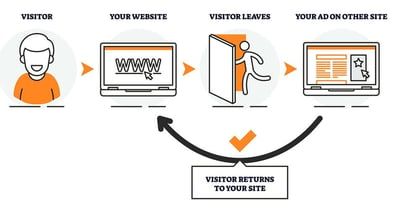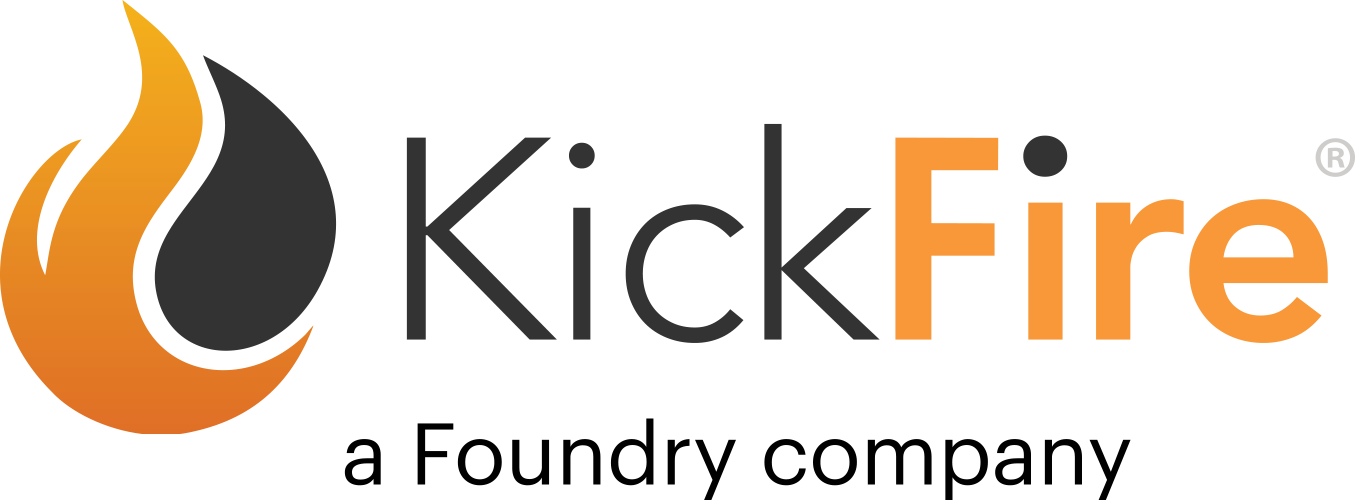Retargeting is a highly effective way to recapture website visitors once they have left and keep your brand top of mind, but it’s not without its drawbacks. Without a carefully crafted retargeting strategy, you’ll see your ad budget go out the door faster than you can possibly imagine with not a whole lot to show for it. However, when done properly search ad retargeting is one of the most effective ways to optimize your ad spend. In this article, I’m going to show you how implementing a dynamic retargeting strategy on your ads will not only save you a fortune in wasted ad dollars, but will result in more qualified leads and better conversion rates.
What are retargeting ads?
Retargeting is the process of showing ads to an audience that previously visited your website and left without converting (for a more in-depth look, check out our Retargeting Article).
Here’s how it works:
- Visitor comes to your website
- They leave without converting
- As they browse the internet, they see your ad on a different website
- They click your ad
- They return to your site, perhaps to a custom-tailored landing page and, ideally, convert.
Here's what makes retargeting ads "dynamic":
In the context of retargeting, “dynamic” refers to the ability of marketers to programmatically adjust their retargeting ad bidding based on a viewers known attributes or browsing history. It’s not necessarily about spending less, it’s about spending smarter by only serving ads to the accounts that really matter.
"It’s not necessarily about spending less, it’s about spending smarter by only serving ads to the accounts that really matter."
How dynamic search ad retargeting works:
Dynamic search ad retargeting in Google works best if you’re already using Google Analytics to monitor your website traffic. If so, there’s an easy Google integration that will not only allow you to retarget your visitors in Google Ads, but will also deliver a ton of valuable account-level data into your Google Analytics dashboard. This integration will identify the exact companies visiting your website and provide firmographic data about your website visitors, such as: company name, industry, revenue, employee count, and more. This website visitor information can then be automatically uploaded into Google Ads, and once you’ve got enough companies in an audience, you’re all set!
Alternatively if you’re not currently using Google Analytics, no worries, you can still get the same data by placing a small JavaScript code onto your website called a “tag”. Once configured, this tag identifies the companies and provides the same firmographic data as the Google integration, you’ll just have to do a little more work behind the scenes to get your retargeting lists into Google Ads.
Once you start seeing the companies visiting your site, you can start building retargeting audiences.
Retargeting audiences
As with any effective account based marketing (ABM) strategy, it all starts with a good target account list. If you haven't already built your ideal customer profile (ICP) don’t worry we’ve got you covered with an article that shows you how to build an ABM target account list with companies that match your ICP. If you already have an ICP in mind, that’s a great start, now it’s time to do the opposite – figure out who you don't want to show your ads to and make an exclusion list.
This list could include:
- Single session bouncers
- Companies outside of your target account list
- Your competitors
- Your own employees
The list could go on, and may be different for your specific goals. Making an exclusion list within Google Ads will prevent you from showing ads to users from specific companies even if they are searching for your specific keywords.
For example: If you only want to retarget companies from the automotive manufacturing industry, that list of companies is going to be much smaller than that of a general paid search campaign.
Your target audience will be much smaller, but for that smaller audience it is critical that you win those ad placements at (almost) any cost. So your cost-per-click will be higher, and you’ll likely spend the same amount of money, but you'll be serving fewer ads overall and only be showing them to in-market companies who are more likely to convert.
Keywords matter, choose wisely
Keyword-based search ads can be one of the most effective ways to get more clicks and drive more traffic, but it can also be one of the most expensive with little return if you’re not careful.
If you’re only targeting broad match keywords (i.e. your specific keyword and keywords Google thinks are related), you will get a significant amount of impressions and possibly even clicks, however, the lack of targeting will often result in lackluster conversion rates and little to no revenue.
On the other hand, as you get more and more specific with the keywords you’re targeting, you drastically decrease the amount of search traffic, but increase the likelihood that the user will actually be in the market for your product or service.
Here’s a real world example of what I mean.
Imagine your company sells lead generation software for B2B businesses and you want to run a search ad campaign. These are three possible keyword phrases that could all apply to your campaign:
- “Lead generation” → Search volume: 12,000/month
- “Lead generation software” → Search volume: 1,000/month
- “B2B lead generation software” → Search volume: 170/month
Looking at these three examples, you can see that the more specific your keyword, the fewer searches it will have – no surprises there.
The main point of looking at these three examples is that the keyword “lead generation” might seem pretty enticing as it has so much more search traffic and thus a wider potential audience to market to. But this is a very broad topic, so most of the users searching this term will unfortunately not be your target audience, or even in the market for your products at all (nothing against your products, they’re awesome). This is the problem with broad match ads, if you’re showing ads to 12,000 mostly out of market users that’s a quick way to blow out your ad budget.
Now this is not to say that nobody searching lead generation is in the market for your products, undoubtedly there will be, but the majority might just be doing research on what lead generation is, or they might be from a B2C company, or any number of other factors.
When you look at “B2B lead generation software”, the search volume drops substantially, but those users searching are much more likely to be in the market for what you’re selling. The only problem here is that 170 users is not a big enough audience to target (Google requires at least 1,000 users to create a retargeting audience).
Keywords search ads for retargeting audiences
This is where the magic happens. By leveraging retargeting audiences in Google Ads, you can have the best of both worlds – you’ll be able to serve ads for both broad and specific keywords knowing that only the right users will be seeing your ads.
Once you’ve uploaded your retargeting audience list, you can take these same keywords from our example above and upload a retargeting audience list so that Google will only show your ad once the specific target account criteria are met.
It all starts with identification...
The process of dynamic ad retargeting relies on being able to accurately identify the companies visiting your website – this makes the whole party possible. If you want to learn how it’s done and how you can get this information integrated directly into your existing Google Analytics and Google Ads platforms, check out our KickFire for Google page.
Or, if you want to see this whole process in action, check out our webinar with the experts at iDimension where we dive deep and show you step-by-step what an actual dynamic retargeting search ad campaign looks like.
